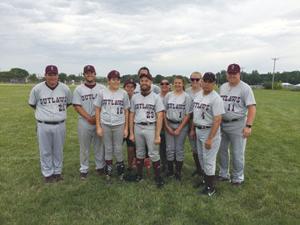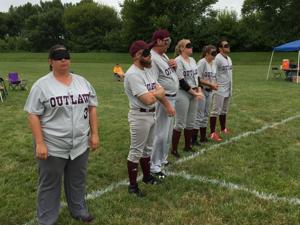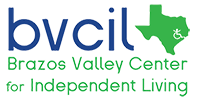|
Information Technology: Not Just a Convenience |
| 07/11/2016 |
| Among the most common unattributed quotes about technology’s impact on the lives of people with disabilities is
“For people without disabilities, technology makes things easier. For people with disabilities, technology makes things possible.” This wise, simple statement has been used over the years in many accessibility speeches and articles to emphasize how access to information technology is not just a convenience for the estimated 54 million Americans with disabilities, it is a necessity and a civil right. However, in order for people with disabilities to be able to use assistive technology’s to access online resources for employment, education and commerce and lead lives of independence depends upon content developers making their information and communications technology accessible. Below are key resources to help public entities meet their responsibilities for accessibility of information and communications technology.
Accessibletech.org is a project of the Great Lakes ADA Center and the Pacific ADA Center to promote full and unrestricted participation in business and society by persons with disabilities through the use of electronic information technology that is universally accessible. Listed below are Accessible tech’s Top Five Technology FAQs that reflect national trends with accessibility.
What is the Status of the Section 508 Standards and Guidelines Refresh? What is accessible electronic & information technology? Increasing the accessibility of technology in your business How does accessible web design benefit all web users?
Listed below are a few upcoming free webinars on accessible technology.
The latest archived webinar about electronic information and communications technology in the workplace, The Importance of Accessibility in Disability Employment is now available to view. Three leading Texas resources for information on how public entities can make their websites accessible are:
The Governor’s Committee on People with Disabilities (Committee) provides GovDelivery updates for informational purposes on a variety of disability related issues for a diverse audience. Updates may include information provided by external sources. The inclusion of this external information does not constitute an official endorsement or approval by the Committee or the Office of the Governor of any information, policy, product, or service offered by an external source. |
Updates
BCS Outlaws place in Beep Baseball World Series

The BCS Outlaws organized in 2014 and this is their second trip to the World Series.

Beep baseball is a baseball game modified for athletes who are blind or visually impaired.
Posted: Thursday, August 11, 2016 12:00 am
By Rebecca Fiedler rebecca.fiedler@theeagle.com
The BCS Outlaws — Brazos County’s beep baseball team for the visually impaired — made its second appearance in the Beep Baseball World Series in Iowa recently, competing against 19 teams that rely on nothing but a player’s sense of hearing.
The Outlaws are a relatively young team, having only been formed in 2014. The team landed in 17th place in 2015 and made a 16th place showing during the series in July.
“Being one of the youngest teams out there, we did really well,” said one of the team’s coaches, local minister Jerry House. “That means we won three games at the World Series.”
The team boasts about a dozen players who range in age from 14 to 45, nine of whom are visually impaired in some way and several who are fully blind. All players in a beep baseball game — with three exceptions — are required to wear a blindfold while playing, House explained, in order to level the playing field. The pitcher, catcher and one field spotter for each team are required to have full vision capabilities to ensure the progression of the game and assist the sightless players. Athletes hit a softball-like ball with a beeping noise device inside.
“It’s a really cool thing to watch a blind person hit a baseball,” House said.
Several members of the Bryan-College Station blind community, in conjunction with the Brazos Valley Center for Independent Living, gathered the resources necessary to form a team with the National Beep Baseball Association two years ago. The Outlaws are one of seven official beep baseball teams in Texas.
Some players are former high school or college athletes, while others are beginners, House said. Those on the team who are 100 percent blind, he noted, are actually the ones who perform best at the sport, as they have honed their sensory skills.
“One of the challenges of beep baseball is just being able to use your ears alone to find the beeping ball,” House said, “and getting past worrying about running into somebody; just trusting your instincts.”
The pastor of Christ United Methodist Church in College Station began assistant coaching the team because his own daughter, a student at Texas A&M, lost much of her vision as a teenager. She played high school volleyball and soccer as well as ran track, but could no longer participate once her vision faded. He said when his daughter learned about the league, she was excited to have a chance to participate in athletics again.
“Coaching this team isn’t any different than coaching a regular team,” said House, who played baseball when he was growing up. “It’s all about motivating people. We all have barriers. You just need to learn how to trust your body.”
One challenge beep baseball teams face — besides hitting and catching a fast-moving ball while blindfolded — is financing.
“A beep baseball is about $35,” House said. “We go through about 30 balls a season. It gets expensive.”
The Brazos Valley Center for Independent Living is the sole title sponsor for the Outlaws, though the team is hoping to expand its reach and grow.
“We’re hoping to try and host a tournament in Bryan-College Station next spring,” House said.
The Outlaws typically begin practicing for the World Series in March. To learn more about beep baseball or for information on how to support or become a part of the Outlaws, visit www.bcsoutlaws.com.
Source:
http://www.theeagle.com/news/local/bcs-outlaws-place-in-beep-baseball-world-series/article_6718dac2-cb9b-55d1-af86-857186b807ff.html
Texas A&M student 3D prints tactile maps of campus for the visually impaired

3D printing technologies have helped to make a difference in the lives of many people across the globe, and in so many ways. Soon, thanks to the ingenuity of a freshman engineering student, the lives of the visually impaired at the Texas A&M University will also be changed for the better with the help of 3D printing. The student, named Tyler Wooten, has been developing a 3D printed tactile map embossed with braille to help the college’s visually impaired students better understand the university campus and navigate it more easily.
Wooten conceived of the idea for the tactile map while taking a 3D printing course at Texas A&M’s Engineering Innovation Center (EIC) last year. Since then, he has been working closely with a fellow student, Kaitlyn Kellermeyer, to turn his idea into a useful and usable reality.

Tyler Wooten and Kaitlyn Kellermeyer
Kellermeyer, an economics student at Texas A&M, lost eyesight in her left eye as a baby and only recently (in 2014) lost eyesight in her right eye as well, leaving her completely blind. For the past two years, Kelleymeyer has struggled to become accustomed to having no eyesight and has depended on help from her friends to help her get to class and the like. She explains, “I had memories of where everything was relationally. With all the open space on campus, and with the lack of auditory cues, I didn’t realize how hard it would be to get around.”
Kellermeyer has also been a key figure in advocating for new and innovative projects around campus to help the visually impaired, which made her the ideal candidate to work with Wooten on developing his 3D printed tactile maps. Since they’ve teamed up, Kellermeyer has given insight, tested, and provided feedback about how the maps should be designed and feel. According to the visually impaired student, the project has given her more freedom and has made all the difference in helping her to navigate around her university.

Wooten, for his part, designed the 3D campus map using SolidWorks software and 3D printed a number of prototypes using the EIC’s in-house 3D printers. Being relatively new to the technology, Wooten went through some trial and error, but with the help of other students and faculty got into the swing of things relatively easily. As he explained in an interview: “For main campus, I had a picture of the map up on one screen, and I had SolidWorks open on my other screen and I was just eyeballing it, drawing all of the buildings. Enough people had heard about it that they taught me how to do it better. Now I can take a screenshot of the map, put it in SolidWorks and just trace the buildings.”
In the end, the 3D printed tactile maps of campus were printed using PLA and are only 1/4 of an inch thick, making them easy to carry around. To account for the size of the campus, Wooten has separated the whole map into different sections, each measuring 5 x 9inches, which can be easily assembled by sliding them together. Wooten, who invested his own money for the 3D printing materials, said that each section took roughly 5 hours to print.

Of course, the project is still in development as is being constantly improved by Wooten and Kellermeyer. For instance, according to the students, the roads on the tactile map are going to be widened, the buildings have been shortened, and the braille has been improved and corrected. The braille, which is printed on a number of the University’s main buildings, is meant to identify main campus spots and help orient the map’s users.
Tracey Foreman, assistant director of disability services at Texas A&M, is optimistic about the project. She said, “Having access to a tactile map allows a visually impaired individual to better understand the scale, size and proximity that cannot always be gathered solely by walking around or having something verbally described to the individual.”
As they keep working on the innovative 3D printed tactile maps for Texas A&M, Wooten is also starting to design tactile maps for other campuses, including the Westbrook Intermediate School in League City, Texas, and the Brazos Valley Center for Independent Living in Bryan, Texas, where a number of disabled people reside. Here at 3Ders, we can’t wait to see what else Wooten, who has managed to help the visually impaired people in his community in only his freshman year, comes up with next!
Source:
http://www.3ders.org/articles/20160807-texas-am-student-3d-prints-tactile-maps-of-campus-for-the-visually-impaired.html
LIVE: Beep Baseball World Series Championship Games
Watch the BCS Outlaws play at the Beep Baseball World Series Championship Games on Saturday, July 30th at 8:00 AM CDT. Follow the link below:
Survey Available – LIFT
The LIFT program is currently seeking assistance in enhancing the program by developing an integrated online/mobile digital platform. They are hoping to collect data on whether people with disabilities would be interested in this type of program and how confident they would be in using an online/mobile digital platform for tobacco cessation.
This survey has been approved by the University of Florida’s Institutional Review Board.
Texas A&M is hiring!
Access Coordinator (Student Development Specialist II)
Disability Services at Texas A&M University
Serves as one of nine professional staff members who work with a variety of students with disabilities to provide and facilitate academic accommodations.
Responsibilities
- Provide on-going service and case management to a caseload of students with disabilities.
- Identify students with disabilities who are eligible for services (review documentation, conduct initial interviews).
- Consult with campus units and departments regarding accessibility issues and laws.
- Assist as needed with exam accommodations and other assigned projects.
- Serve on University, Division and Departmental committees and task forces.
- Keep updated on research and issues related to students with disabilities in higher education.
- Evening work and/or travel may be required.
- Other duties as assigned.
Required Qualifications
- Bachelor’s degree and at least one year of experience in student affairs work or related specialty OR Master’s degree.
- Ability to relate well to the unique needs of college students with disabilities, including a desire to work one-on-one with these students to help meet their academic needs.
- Ability to multi-task and work cooperatively with others.
Preferred Qualifications
- Bachelor’s degree in humanities, social science, or related area OR Master’s degree in student affairs, counseling, or related field.
- Related extra-curricular experience and/or student development experiences.
- Knowledge of disability law as it applies to higher education.
Salary and Benefits:
- $33,000-38,000 with excellent state benefits.
APPLY TODAY!
- Apply at http://jobpath.tamu.edu/postings/98309.
- Review of applications will begin July 18, 2016 and will continue until position is filled.
- For more information contact Tracey Forman, Assistant Director, at tforman@tamu.edu or 979-845-1637.
ABOUT THE DEPARTMENT AND UNIVERSITY
Disability Services staff members interact and collaborate with students, faculty and staff to promote an inclusive environment at Texas A&M University by educating the campus community and facilitating appropriate accommodations for students with disabilities. Disability Services offers accommodations counseling, evaluation referral, disability-related information, assistive technology services, sign language interpreting and transcription services for academically related purposes.
Texas A&M University is a land-grant, sea-grant, and space-grant institution located in College Station, Texas. The university is centrally located, approximately equidistant from three of the ten largest cities in the United States (Houston, Dallas, and San Antonio) and the state capital (Austin). The university’s enrollment is more than 60,000 students studying for degrees in seventeen academic colleges including the Health Science Center and School of Law.
Texas A&M University has a strong institutional commitment to the principle of diversity in all areas. In that spirit, we are particularly interested in receiving applications from a broad spectrum of people including women, members of ethnic minorities and individuals with disabilities.
The Division of Student Affairs is committed to cultivating a campus environment where people from all backgrounds and experiences can thrive. The Division builds and models a welcoming environment that promotes a deeper understanding of identities of an increasingly diverse population.

